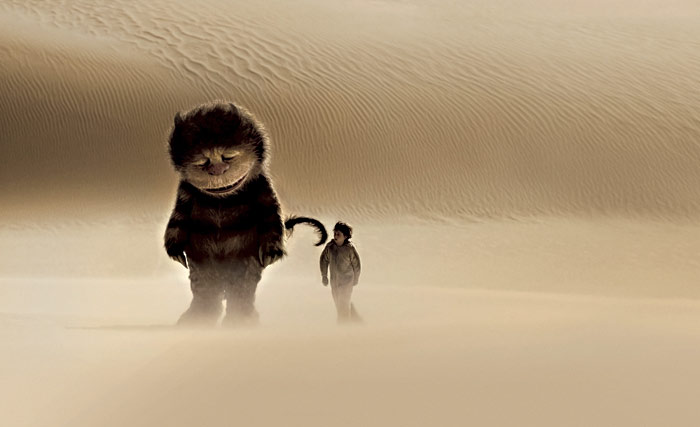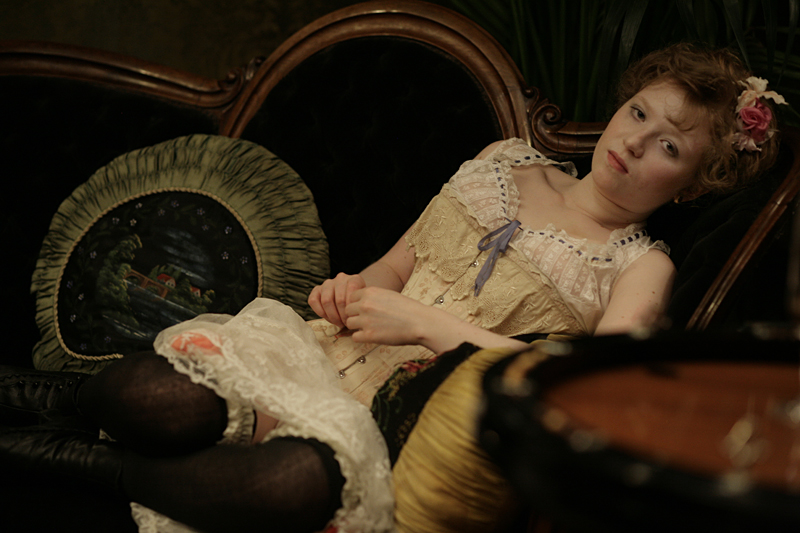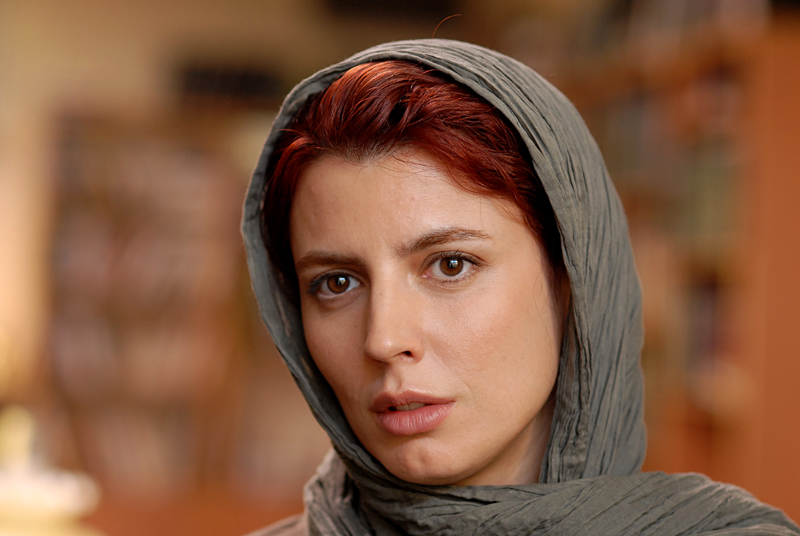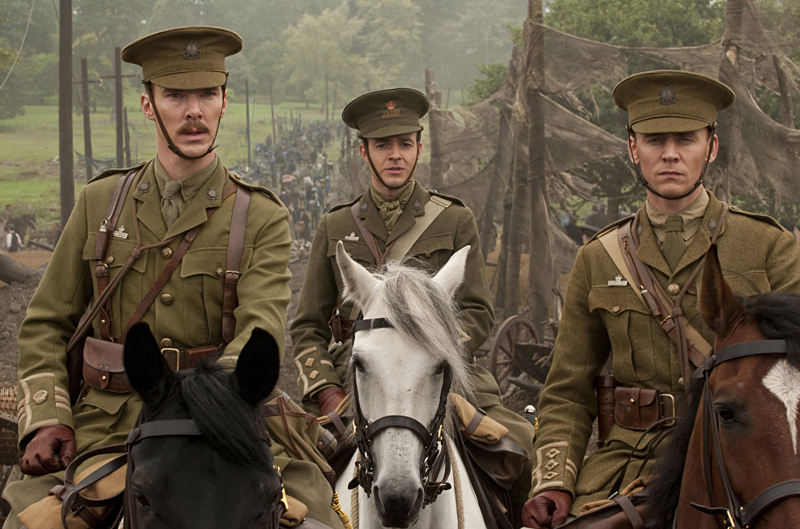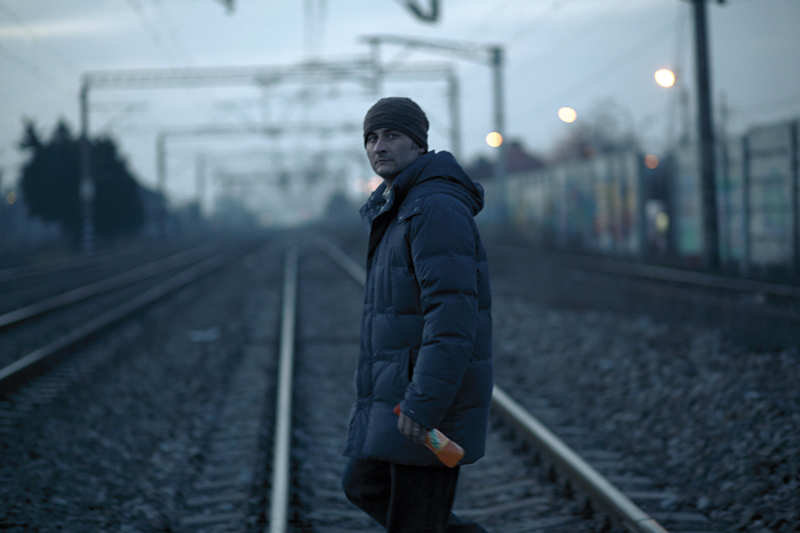Directed by Spike Jonze from a 400-word children’s picture book first published in 1963, Where the Wild Things Are may be the toughest adaptation since Tim Burton fashioned Mars Attacks! from a series of bubblegum cards. Tougher, actually: Burton was working with ephemeral, anonymous trash; Jonze is elaborating on a classic by distinguished author-illustrator Maurice Sendak.
As its title suggests, Wild Things is a book about the Freudian id—and it’s also a media saga, having served as the basis of an animated short, an opera, a ballet, and a museum exhibit, as well as a prop for child psychologists and some relatively discreet merchandizing. Thus tucked into a collective, multigenerational unconscious, the slender text exudes authority. Jonze has struggled to bring the book—which was to have been his first feature—to the screen for even longer than the eight years Sendak took to finish it.
The result isn’t labored so much as well-behaved. It’s difficult not to watch the movie as a series of decisions carefully made and problems responsibly addressed by Jonze and screenwriter Dave Eggers: Will the unruly protagonist Max remain a preliterate 5 or be older? (Older.) Is the projection of his inner world best achieved through animation or puppetry? (Puppetry.) Natural or fantastic landscapes? (Both.) What sort of music will comment on the action? (Insipid indie rock.) But, mainly, if one is to make something more than a 10-minute short, how to open up the book?
Wild Things does open promisingly with Max-ish doodles defacing the Warner Bros. logo and proceeds brilliantly in providing a bit of a backstory. Max (Max Records) is an apparently lonely 9-year-old living in a wintry old suburban neighborhood with an early-adolescent elder sister and a harried single mom (Catherine Keener). Abandoned by his sis when her friends good-naturedly wreck his front-yard igloo in a snowball fight, mad Max retaliates by trashing her room.
Unmotivated in the book, Max’s tantrum is here triggered by his sister’s betrayal and amplified by his mother’s. (Women!) When Mom brings date (Mark Ruffalo) home for dinner, Max dons his wolf suit and chomps down on her shoulder. “What is wrong with you? You’re out of control!” she shrieks, as the bad boy flees the house. The music grows wilder—it’s Max’s night to howl. He finds a boat and sails off to discover his fellow Wild Things. So far, so totally Cassavetes: The first 15 minutes have a liberating, handheld tumult only slightly mitigated by alt-goddess Karen O’s wistful, borderline-twee vocalizing.
Arriving at the heart of darkness, Max finds the Wild Things staging their own destructive freak-out in the woods. Nine-foot puppets with digitally enhanced expressions and celebrity voices (Catherine O’Hara’s being by far the most expressive), the WTs are hyper-real reproductions of Sendak’s cuddly-scary creatures—albeit considerably more loquacious. Master Records acquits himself well playing opposite these things, particularly once he becomes their king and proclaims that the mad, dancing, shouting, havoc-wreaking Wild Rumpus must begin.
The book ends soon after; the movie goes for perhaps another hour. Falling asleep in the midst of a creaturely cuddle-puddle, Max awakens not in his room, as more or less happens in the book, but to the realization that he, the King of the Wild Things, must rule. (Call it his Obama moment.) “Will you keep out all the sadness?” one subject wonders. Turns out that the Jonze/Eggers WTs are rife with complicated relationships, hurt feelings, lost best friends, and secret new ones. In an attempt to maintain his position, King Max produces one rumpus too many—and the neediest member of the gang (James Gandolfini) rips off the big bird-thing’s arm (a horrifying moment, actually). Yelling that the perp is “out of control,” Max has learned what it’s like to be a parent: Time to go home.
While hardly as hysterical as Dorothy’s return from Oz, the denouement does lack Sendak’s unsentimental restraint—and, consequently, its power. Sendak, who has cited early Mickey Mouse cartoons and King Kong as formative experiences, was working from his own unconscious, and he has called the book “a personal exorcism.” Jonze has said that Sendak encouraged him to find himself in Wild Things. Dutifully, the filmmaker gave Max a single mom and spent hours with Eggers talking about their respective childhoods. Not much poetic sublimation here.
What’s best about Jonze’s movie is its kinetic feel for physical play—the herky-jerky camera as Max and the WTs zip and bounce through the forest. What’s weakest is its blandness, the sense memory of a child raised on Sesame Street. The psychic environment is less King Kong‘s Skull Island than Fred Rogers’ neighborhood: Where the Wild Things Aren’t.
Wild Things isn’t overlong, but it is underwhelming. Who is the audience? Children brought to see it might find it a downer. Triumph or travesty, this movie is more likely something for Jonze’s generational cohorts to love or loathe. (How many suburban garage bands had the name Wild Rumpus?) For me, it seemed like group therapy with the Muppets.
